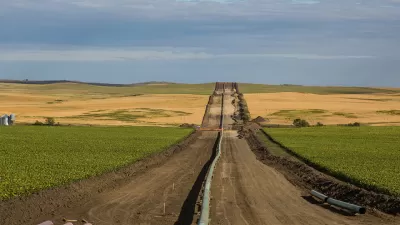Back in 2006, Supreme Court nominee Sonia Sotomayor had a role in a controversial eminent domain ruling. Reason magazine takes a look at the decision and what it might mean for property rights if she's confirmed to the Court.
Similar in nature to the widely-followed 2005 Kelo v. New London decision, Sotomayor's vote in this 2006 case allowed a city to use eminent domain against a landowner standing in the way of a new development.
"The controversy centers on Sotomayor's vote in a 2006 eminent domain case, Didden v. Village of Port Chester. New York entrepreneur Bart Didden says Port Chester condemned his land after he refused to pay $800,000 (or grant a 50 percent stake in his business) to a developer hired by the village. One day after Didden refused to pay those bribes, Port Chester began eminent domain proceedings against him.
As University of Chicago law professor Richard Epstein put it, 'The case involved about as naked an abuse of government power as could be imagined.' But that didn't stop Judge Sotomayor and two of her colleagues on the 2nd Circuit Court of Appeals from upholding the district court decision that ruled in favor of the village."
FULL STORY: "As Naked an Abuse of Government Power as Could be Imagined"

Manufactured Crisis: Losing the Nation’s Largest Source of Unsubsidized Affordable Housing
Manufactured housing communities have long been an affordable housing option for millions of people living in the U.S., but that affordability is disappearing rapidly. How did we get here?

Americans May Be Stuck — But Why?
Americans are moving a lot less than they once did, and that is a problem. While Yoni Applebaum, in his highly-publicized article Stuck, gets the reasons badly wrong, it's still important to ask: why are we moving so much less than before?

Using Old Oil and Gas Wells for Green Energy Storage
Penn State researchers have found that repurposing abandoned oil and gas wells for geothermal-assisted compressed-air energy storage can boost efficiency, reduce environmental risks, and support clean energy and job transitions.

San Antonio Remains Affordable as City Grows
The city’s active efforts to keep housing costs down through housing reforms and coordinated efforts among city agencies and developers have kept it one of the most affordable in the nation despite its rapid population growth.

What Forest Service Cuts Mean for Cities
U.S. Forest Service employees work on projects that have impacts far beyond remote, rural wilderness areas.

North Texas Transit Leaders Tout Benefits of TOD for Growing Region
At a summit focused on transit-oriented development, policymakers discussed how North Texas’ expanded light rail system can serve as a tool for economic growth.
Urban Design for Planners 1: Software Tools
This six-course series explores essential urban design concepts using open source software and equips planners with the tools they need to participate fully in the urban design process.
Planning for Universal Design
Learn the tools for implementing Universal Design in planning regulations.
Heyer Gruel & Associates PA
City of Moreno Valley
Institute for Housing and Urban Development Studies (IHS)
City of Grandview
Harvard GSD Executive Education
Salt Lake City
NYU Wagner Graduate School of Public Service
City of Cambridge, Maryland



























